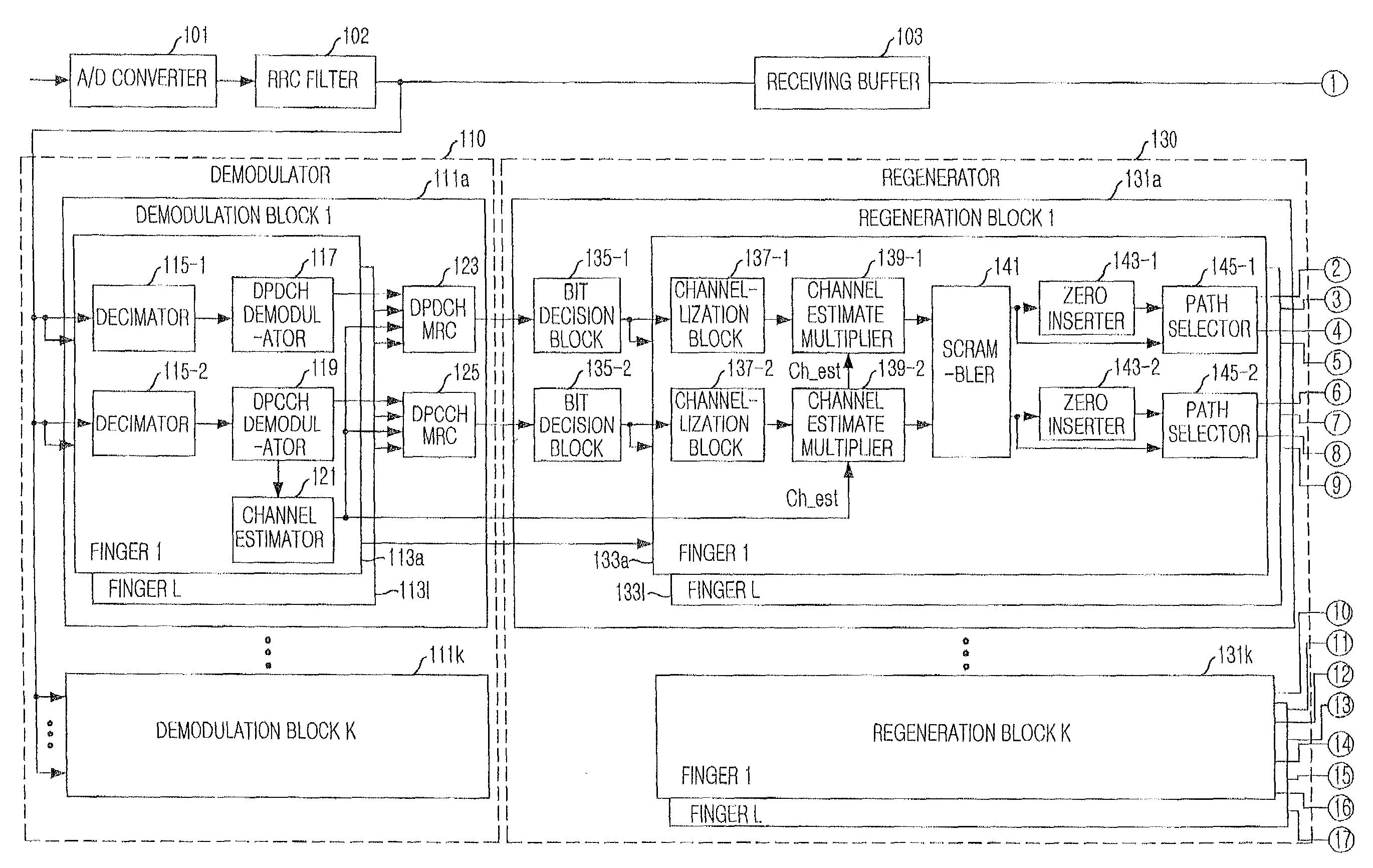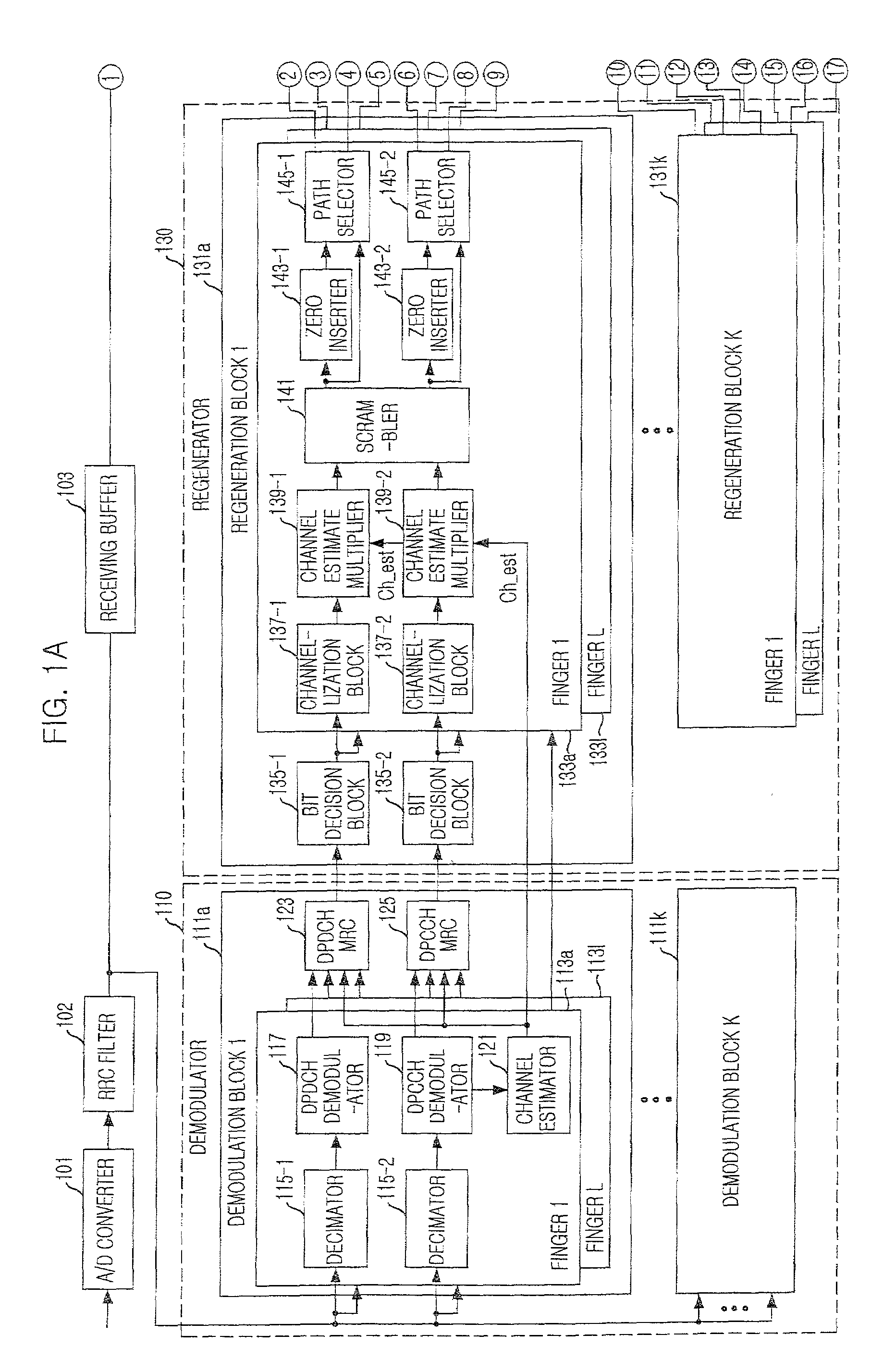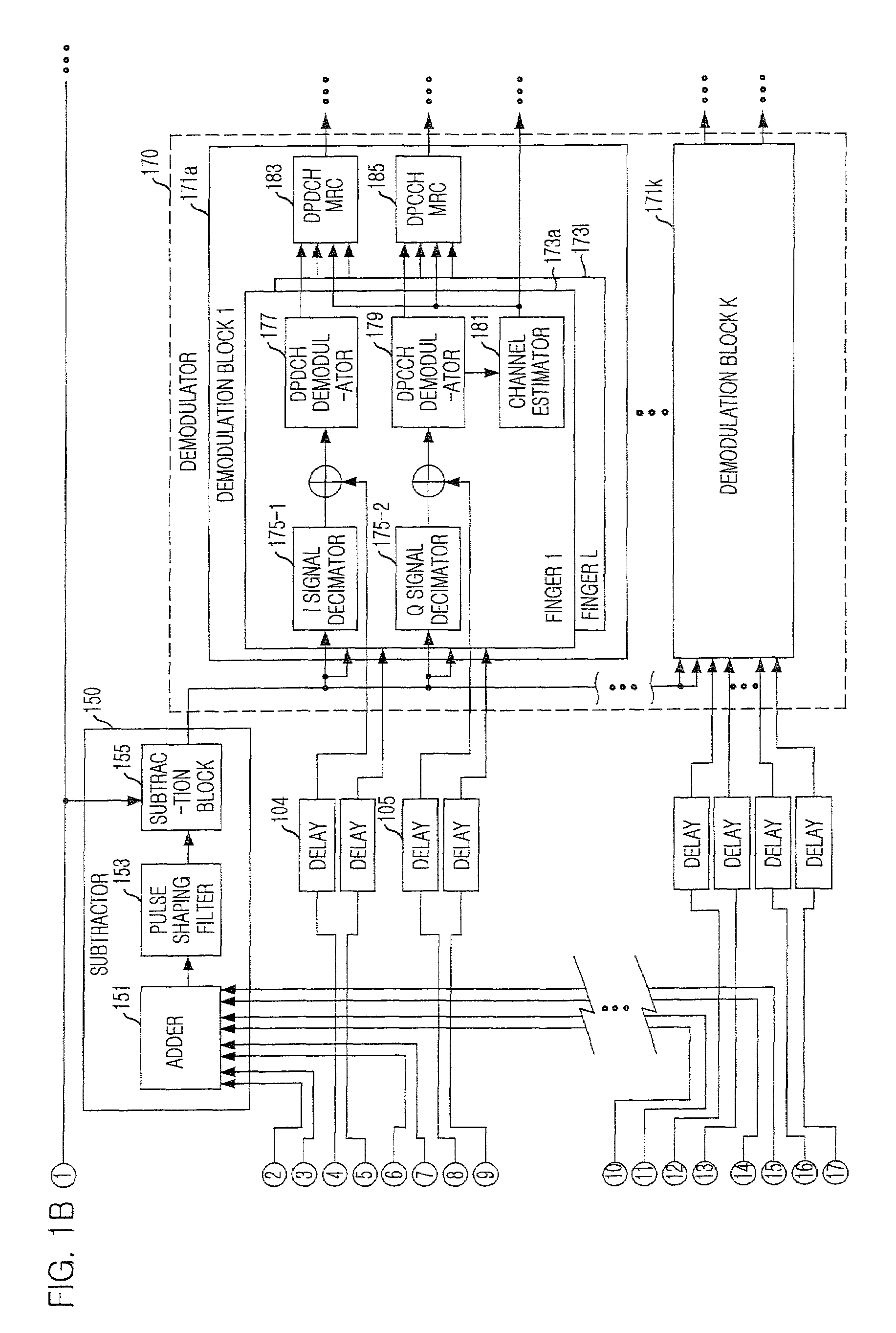Interference cancellation receiver for use in a CDMA system
a receiver and interference cancellation technology, applied in the direction of transmission, electrical equipment, etc., can solve the problems of reducing affecting and the complexity of the system is comparatively high, so as to enhance the performance of the receiver and improve the system complexity
- Summary
- Abstract
- Description
- Claims
- Application Information
AI Technical Summary
Benefits of technology
Problems solved by technology
Method used
Image
Examples
Embodiment Construction
[0016]Hereinafter, with reference to the accompanying drawings, some preferred embodiments of the present invention would be explained in detail. It should be noticed that, when assigning reference numerals to components illustrated in each drawing, components performing a same function are represented by an identical reference numeral although they are shown in different drawings.
[0017]Referring to FIGS. 1A and 1B, there is shown a block diagram of an interference cancellation receiver for the multistage parallel interference cancellation in accordance with an embodiment of the present invention and its operation will be described herein below.
[0018]A received intermediate frequency (IF) signal is generated after a transmitted signal passes through a receiving antenna (not shown), a carrier demodulator (not shown) and an analog-digital (A / D) converter 101. Then, the received IF signal is converted to a baseband signal by a root raised cosine (RRC) filter 102 which is the same band ...
PUM
 Login to View More
Login to View More Abstract
Description
Claims
Application Information
 Login to View More
Login to View More - R&D
- Intellectual Property
- Life Sciences
- Materials
- Tech Scout
- Unparalleled Data Quality
- Higher Quality Content
- 60% Fewer Hallucinations
Browse by: Latest US Patents, China's latest patents, Technical Efficacy Thesaurus, Application Domain, Technology Topic, Popular Technical Reports.
© 2025 PatSnap. All rights reserved.Legal|Privacy policy|Modern Slavery Act Transparency Statement|Sitemap|About US| Contact US: help@patsnap.com



